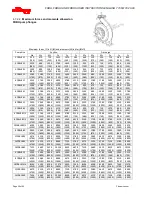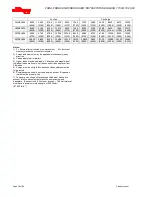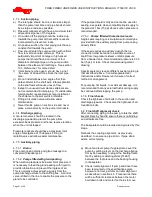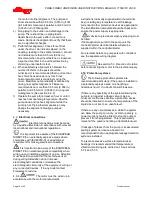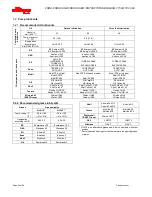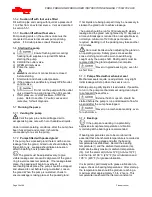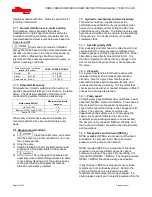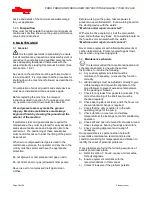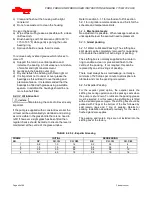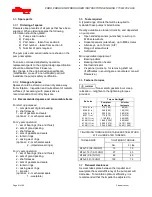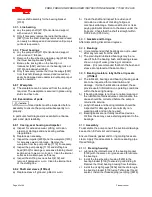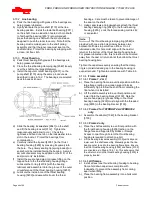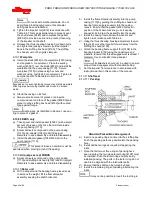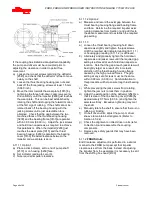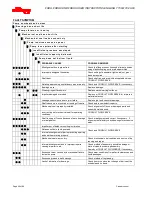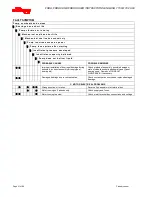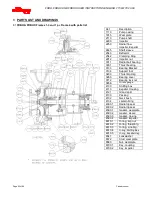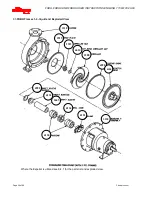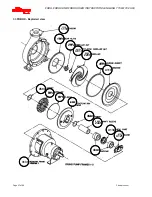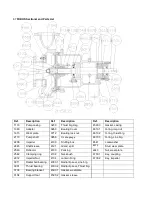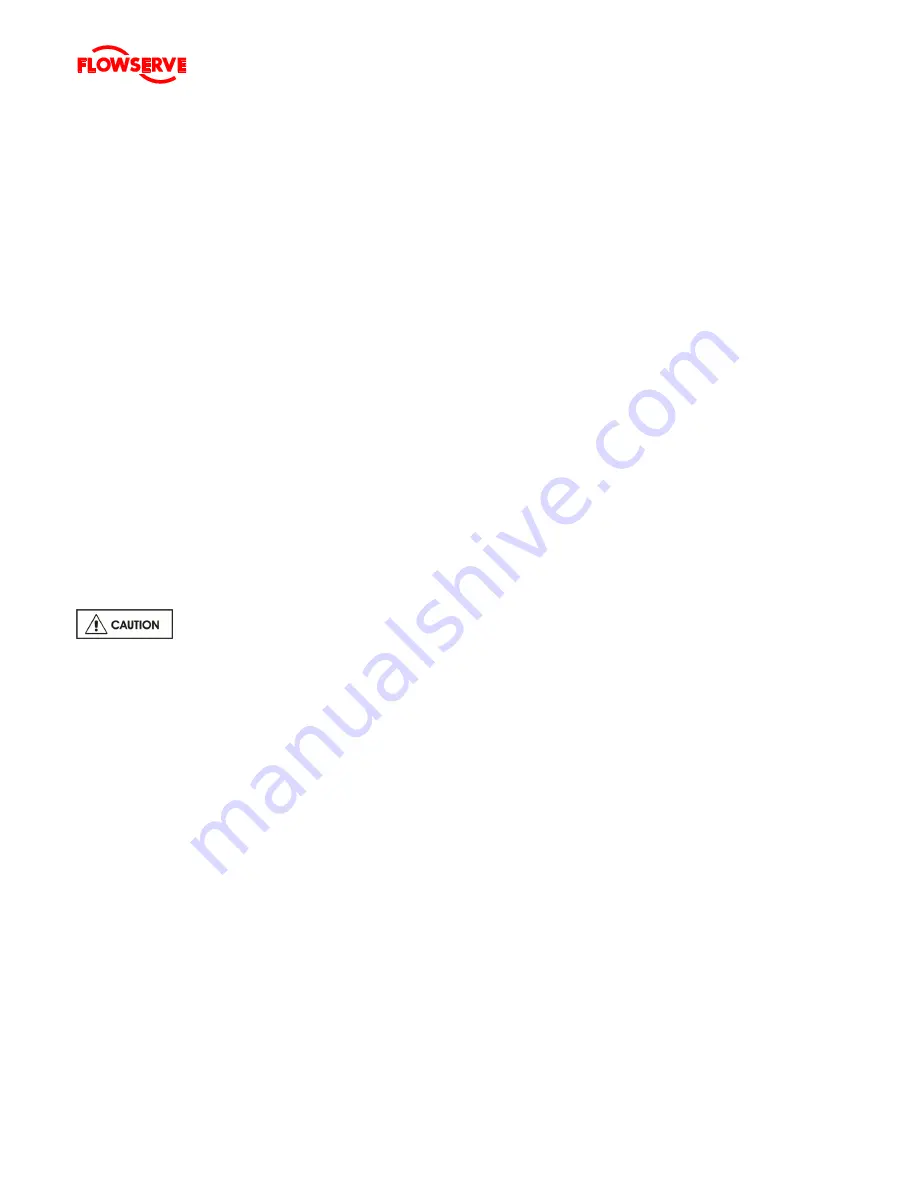
FRBH, FRBHX AND FRBHS USER INSTRUCTIONS ENGLISH 71569178 20-08
Page 43 of 60
Flowserve.com
®
remove shaft assembly for the bearing bracket
[3130].
6.8.5
Line bearing
a) Lay the pump shaft [2110] horizontal and support
with wooden ‘V’ Blocks.
b) Only if necessary remove the radial ball bearing
[3011] from the shaft. Bearings removed and reused
can easily be damaged and undetected until pump is
put back in operation,
6.8.6
Thrust bearings
a) Lay the pump shaft [2110] horizontal and support
with wooden ‘V’ Blocks.
b) Remove the thrust bearing clamping ring [2542] from
the thrust bearing bracket [3230].
c) Bend up the locking tab on the bearing nut
lockwasher [6541] and remove the bearing lock-nut
[3712] and lockwasher [6541].
d)
Only if necessary remove the thrust bearings [3031]
from the shaft. Bearings removed and reused can
easily be damaged and undetected until pump is put
back in operation
6.8.7 Wearplate
a) The wearplate can be removed from the casing if
required. The wearplate is secured in place using
studs and hex nuts.
6.9 Examination of parts
Used parts must be inspected before
assembly to ensure the pump will subsequently run
properly.
In particular, fault diagnosis is essential to enhance
pump and plant reliability.
6.9.1 Casing, seal housing and impeller
a) Inspect for excessive wear, pitting, corrosion,
erosion or damage and any sealing surface
irregularities.
b)
Replace as necessary.
c) Inspect the impeller [2200] and the wearplate [1915]
for excessive wear or damage. Remove the
wearplate from the pump casing [1110] if necessary.
d) Inspect the pump casing [1110] and stuffing box
head [4100] for damage or excessive thinning of wall
sections due to wear or corrosion. Clean the internal
surfaces to maintain pump efficiency.
e) Inspect the stuffing box neck bush [4132] and
remove if damaged or worn. Clean the internal bore
of the stuffing box.
6.9.2 Shaft and sleeve (if fitted)
a) Replace sleeve if grooved, pitted or worn.
b)
Clean the shaft and inspect for evidence of
corrosion, evidence of cracking, fatigue or
mechanical damage. Remove all burrs or nicks
paying particular attention to the areas under the
lip seals. Check that the shaft is straight within
0.002 inch (0.050 mm).
6.9.3
Gaskets and O
-
rings
After dismantling, discard and replace.
6.9.4
Bearings
a) It is recommended that bearings are not re-used
after any removal from the shaft.
b)
The plain liquid lubricated bearings may be re
-
used if both the bearing bush and bearing sleeve
show no sign of wear, grooving or corrosion
attack. (It is recommended that both the bush and
sleeve are replaced at the same time.)
6.9.5
Bearing isolators, labyrinths or lip seals
(if fitted)
a) The lubricant, bearings and bearing housing seals
are to be inspected for contamination and
damage. If oil bath lubrication is utilised, these
provide useful information on operating conditions
within the bearing housing.
b)
If bearing damage is not due to normal wear and
the lubricant contains adverse contaminants, the
cause should be corrected before the pump is
returned to service.
c)
Labyrinth seals and bearing isolators should be
inspected for damage but are normally non
-
wearing parts and can be re
-
used.
d)
Bearing seals are not totally leak free devices.
Oil from these may cause staining adjacent to the
bearings.
6.10
Assembly
To assemble the pump consult the sectional drawings,
s
ee section 8,
Parts list and drawings
.
Ensure threads, gasket and O-ring mating faces are
clean. Apply thread sealant to non-face sealing pipe
thread fittings.
6.10.1
Bearing housing
a) Lubricate the internal bores of the bearing bracket
[3130] with the same oil or grease used to lubricate
the bearings.
b) Install the thrust bearing housing [3230] in the
bearing bracket [3130] to ensure a good sliding fit.
Remove the thrust bearing housing from the frame.
c) Install the oil sight gauge [3856] and the drain lug in
the bearing bracket [3130] using Teflon pipe thread
sealant. Install the threaded plug (vent plug) [6578].

